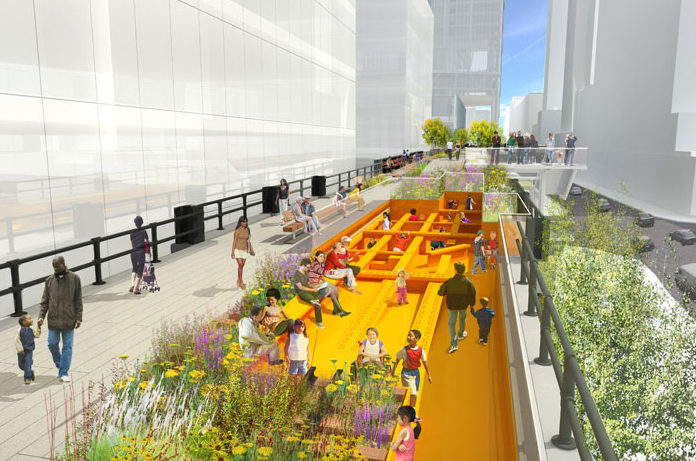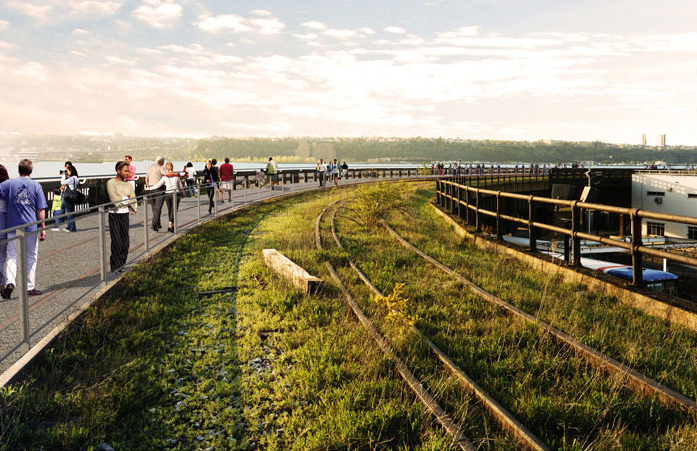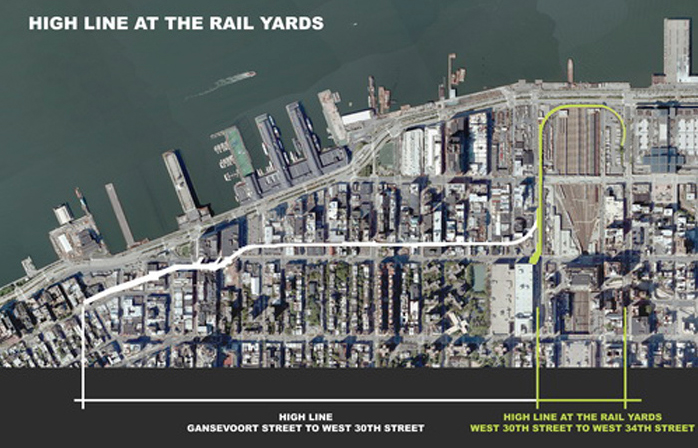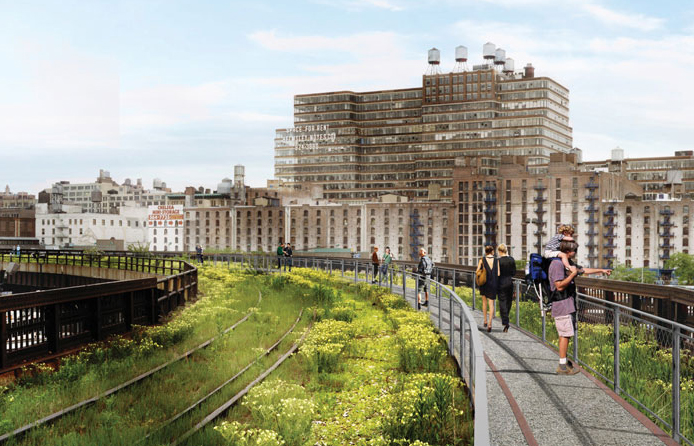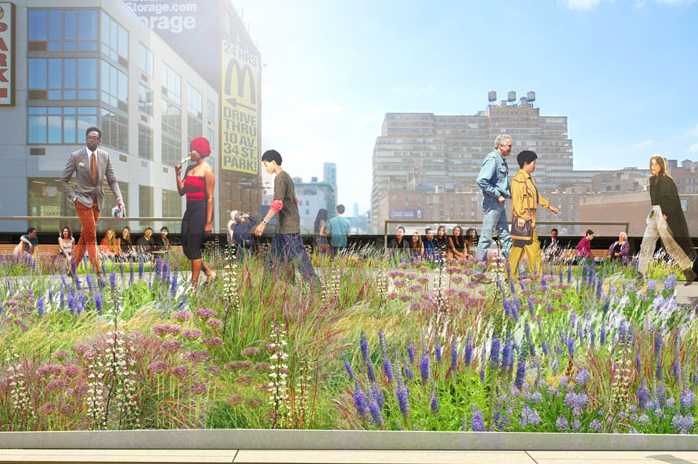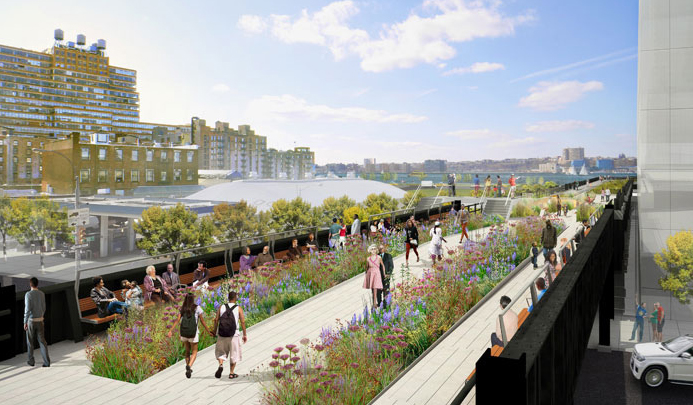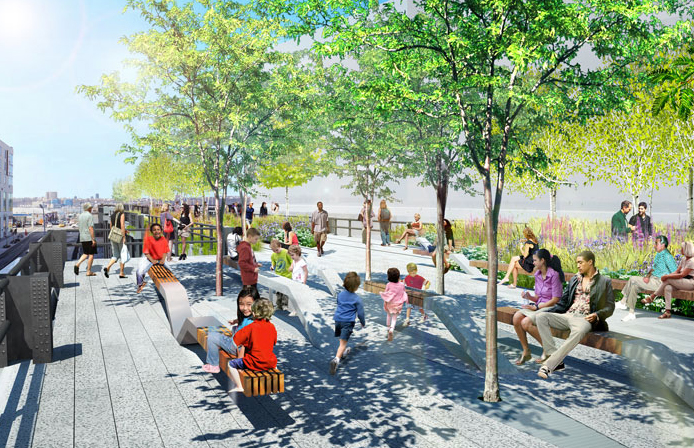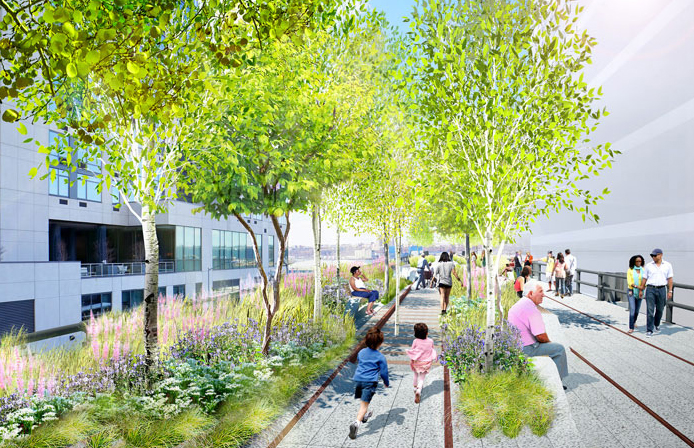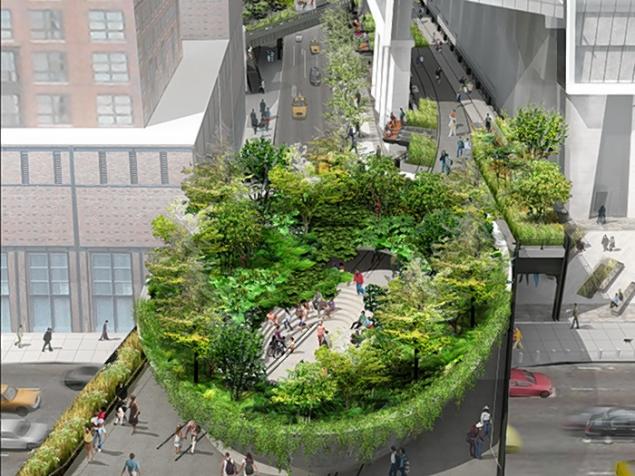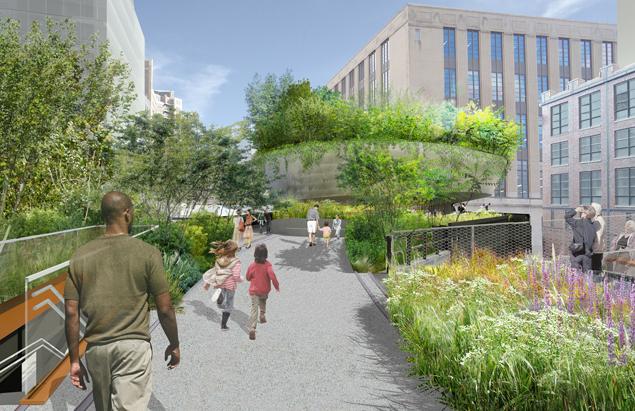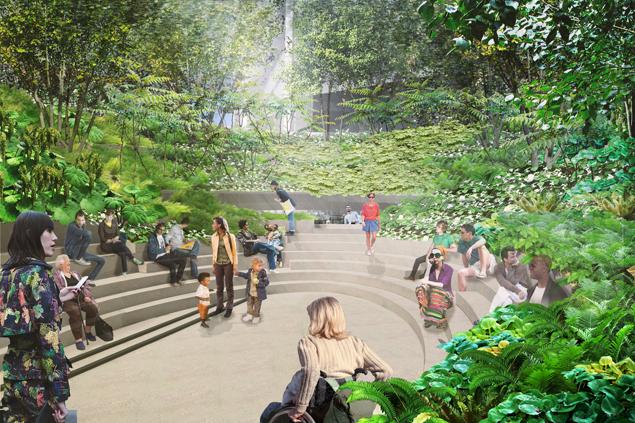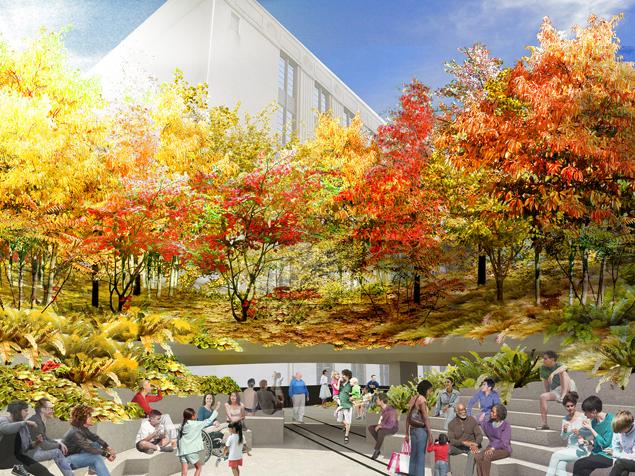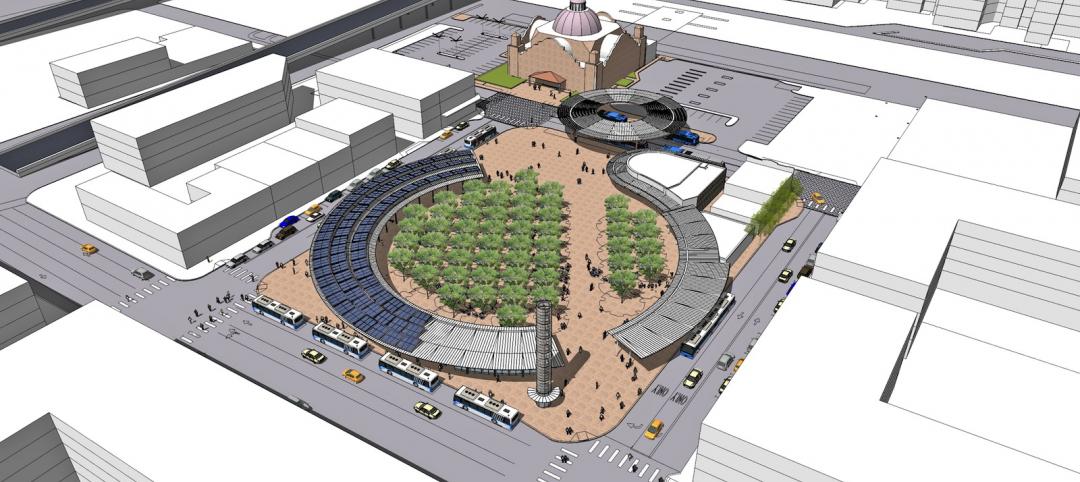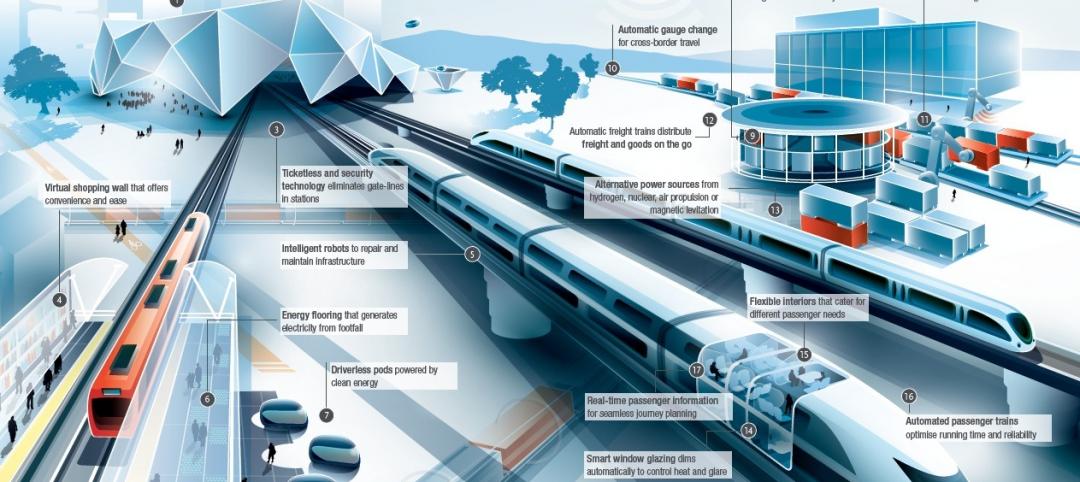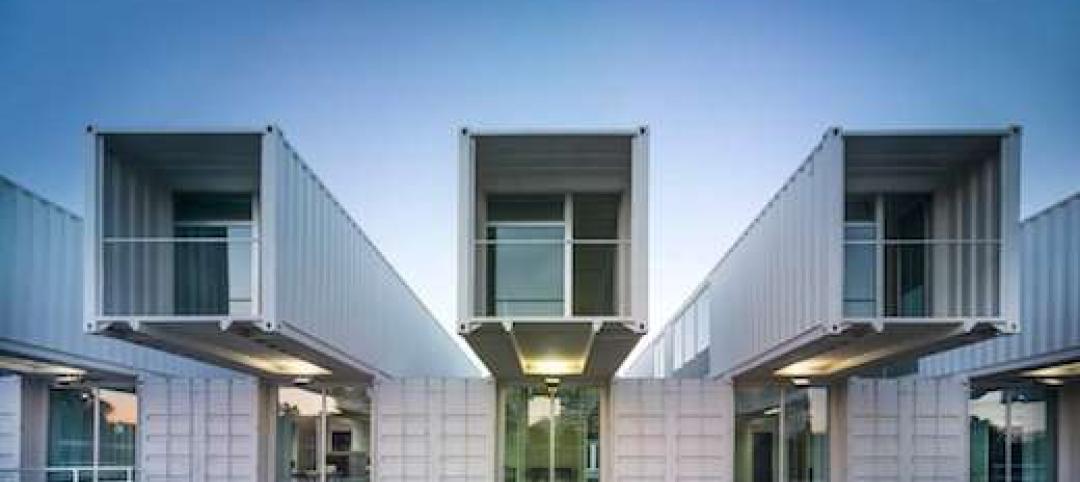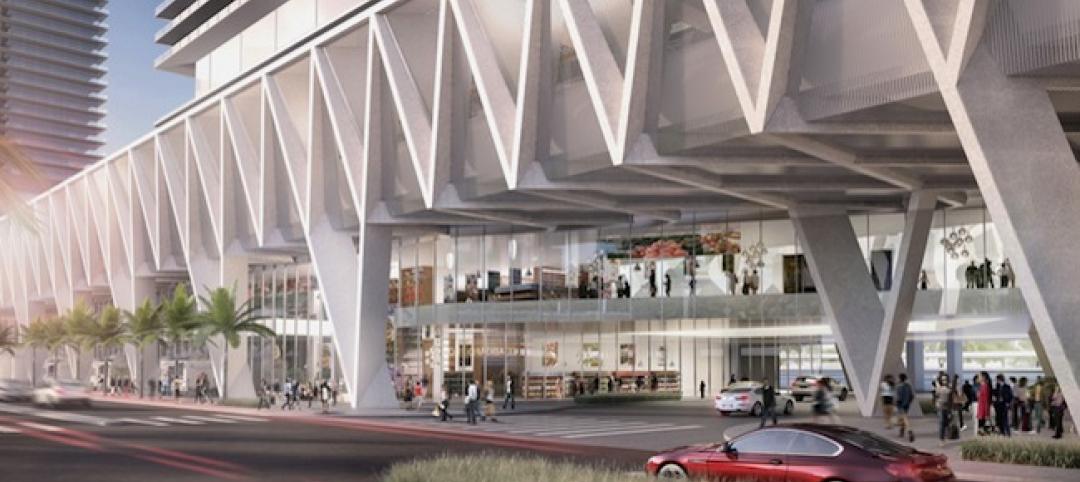The final phase of New York’s High Line elevated railway park is slated to open in the fall of 2014. The park will be located between West 30th and West 34th streets to the south and north, and 10th and 12th avenues to the east and west.
The final section, called High Line at the Rail Yards, will be unique from its two predecessors in its aesthetic: the aged, rusted tracks will remain and will be surrounded by natural foliage, rather than manicured perennials.
Friends of the High Line co-founder Joshua David told the New York Times, “People fell in love with the idea that nature had taken over this monumental industrial site.”
There will be one break in that natural feel: Coach’s new building will straddle a section of the new High Line.
In order to preserve parts of the tracks, a path and railing system will be installed to guide visitors safely through the linear park. Other features include a postindustrial jungle gym for children and a planted bowl theater that will jut out along W. 30th Street.
According to Friends of the High Line co-founder Robert Hammond, “Central Park is an escape from the city, an immersion in nature. On the High Line, you’re always aware of the city around you. We wanted to create a space where people could be immersed in nature unlike anywhere else on the High Line.”
Here's a sneak peek at the distinguishing design features of High Line at the Rail Yards:
Related Stories
| Jun 30, 2014
San Antonio green lights multimodal transit center
The new 90,000-sf development will principally service San Antonio’s growing network of city bus and VIA PRIMO bus rapid transit service, including real-time arrival updates, as well as become an iconic public plaza for the city.
| Jun 30, 2014
Research finds continued growth of design-build throughout United States
New research findings indicate that for the first time more than half of projects above $10 million are being completed through design-build project delivery.
| Jun 30, 2014
Arup's vision of the future of rail: driverless trains, maintenance drones, and automatic freight delivery
In its Future of Rail 2050 report, Arup reveals a vision of the future of rail travel in light of trends such as urban population growth, climate change, and emerging technologies.
| Jun 18, 2014
Arup uses 3D printing to fabricate one-of-a-kind structural steel components
The firm's research shows that 3D printing has the potential to reduce costs, cut waste, and slash the carbon footprint of the construction sector.
| Jun 12, 2014
Austrian university develops 'inflatable' concrete dome method
Constructing a concrete dome is a costly process, but this may change soon. A team from the Vienna University of Technology has developed a method that allows concrete domes to form with the use of air and steel cables instead of expensive, timber supporting structures.
| Jun 6, 2014
Shipping container ship terminal completed in Spain
In Seville, Spain, architectural firms Hombre de Piedra and Buró4 have designed and completed a cruise ship terminal out of used shipping containers.
| Jun 2, 2014
Parking structures group launches LEED-type program for parking garages
The Green Parking Council, an affiliate of the International Parking Institute, has launched the Green Garage Certification program, the parking industry equivalent of LEED certification.
| Jun 2, 2014
SOM unveils plans for Miami transit hub
The elevated station will be a key portal within All Aboard Florida’s rail system, the nation's only privately owned, operated, and financed rail network.
| May 29, 2014
7 cost-effective ways to make U.S. infrastructure more resilient
Moving critical elements to higher ground and designing for longer lifespans are just some of the ways cities and governments can make infrastructure more resilient to natural disasters and climate change, writes Richard Cavallaro, President of Skanska USA Civil.
| May 20, 2014
Kinetic Architecture: New book explores innovations in active façades
The book, co-authored by Arup's Russell Fortmeyer, illustrates the various ways architects, consultants, and engineers approach energy and comfort by manipulating air, water, and light through the layers of passive and active building envelope systems.


